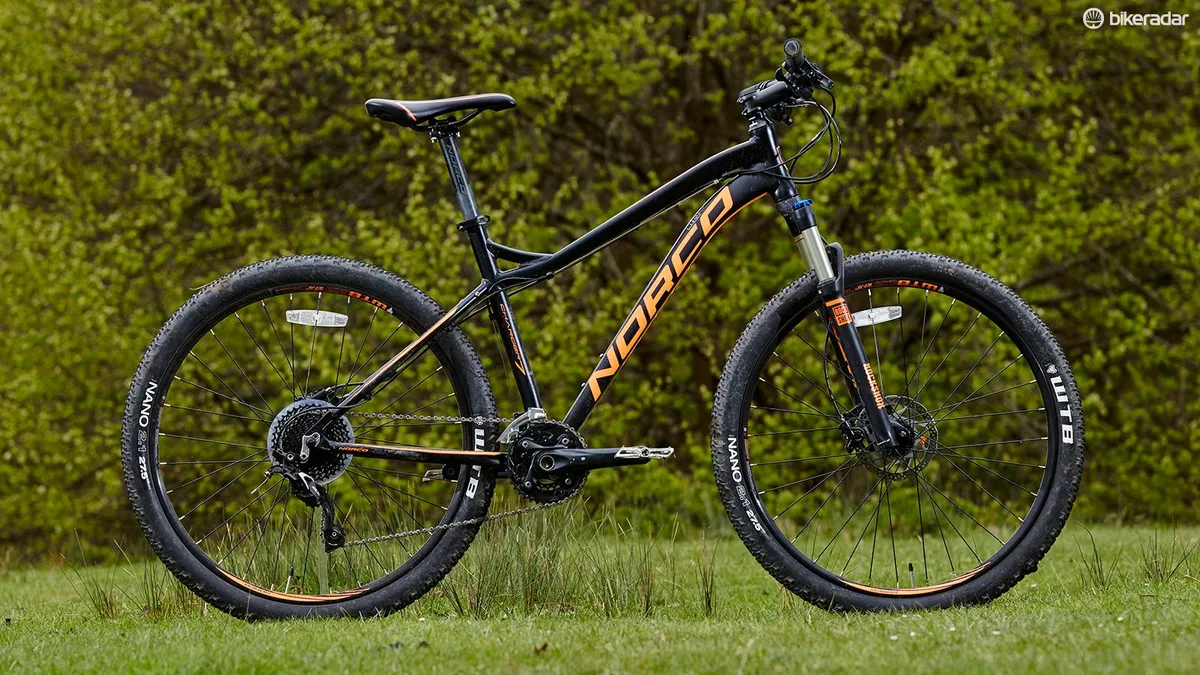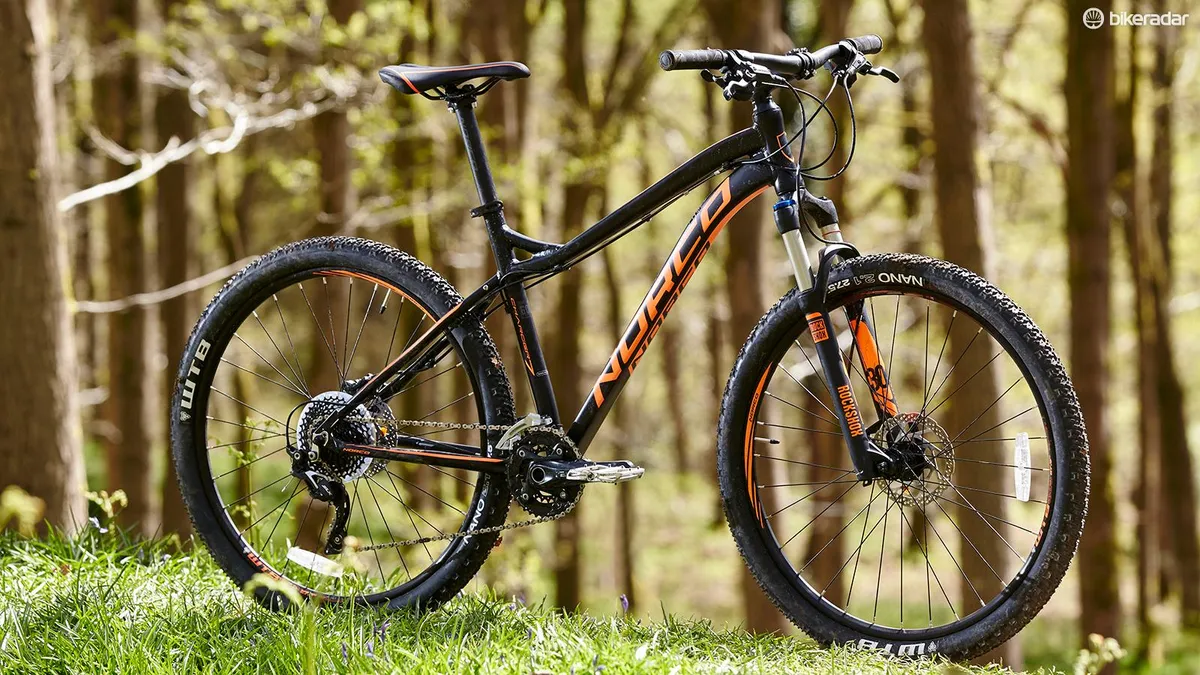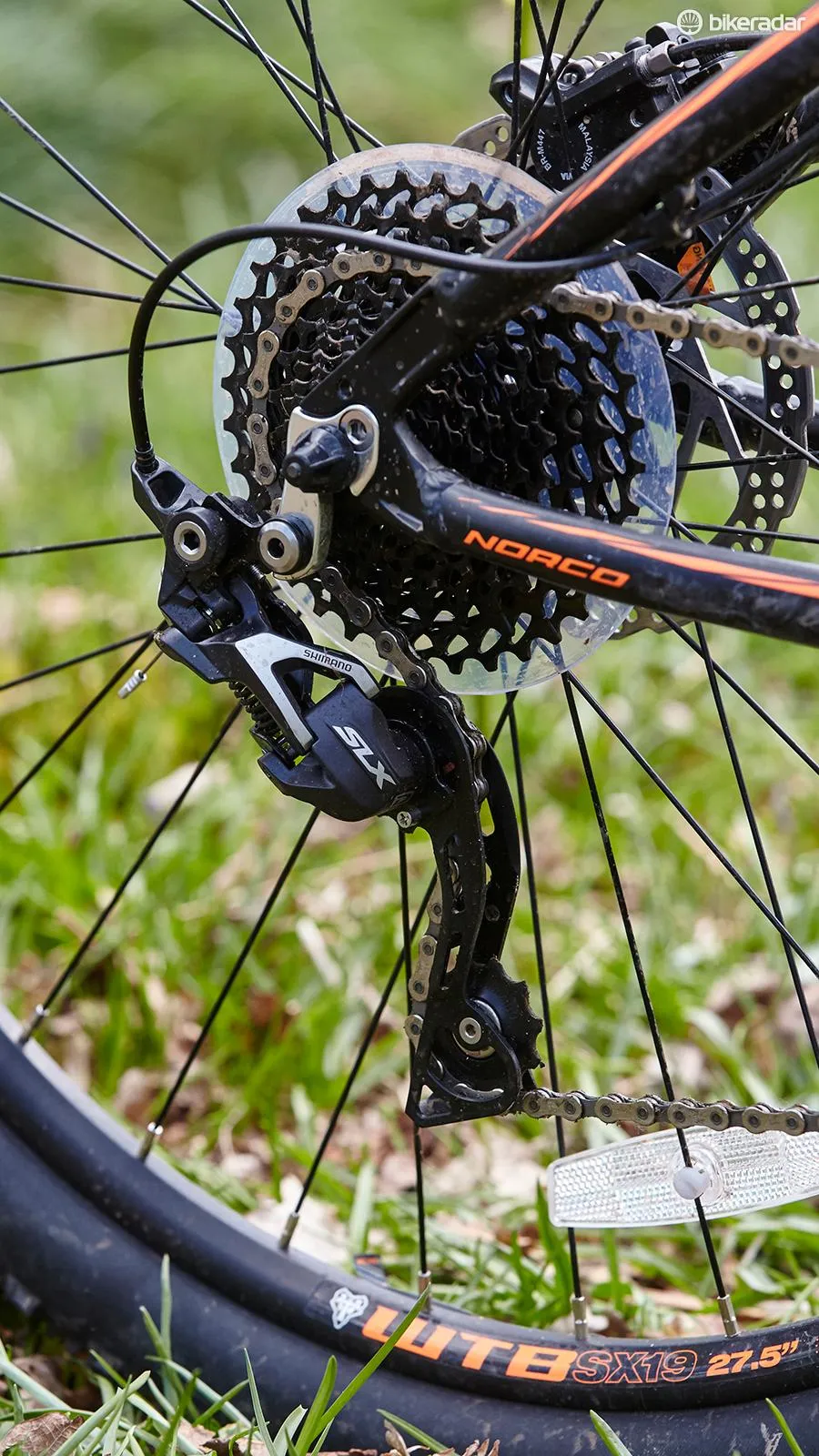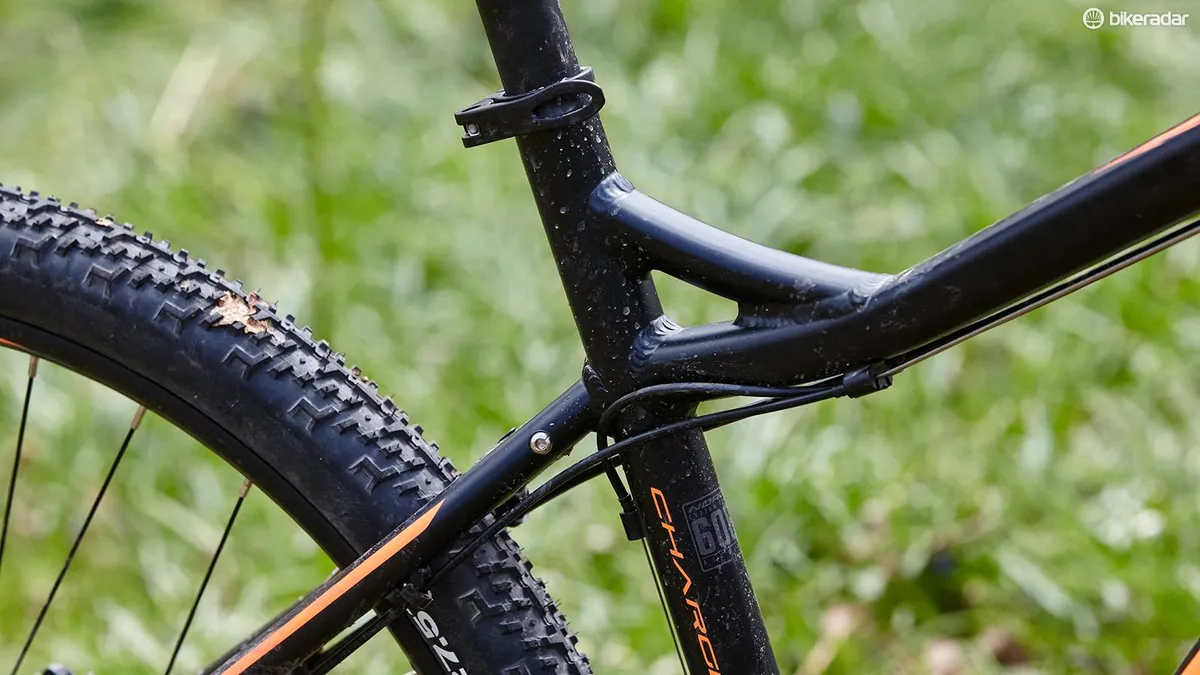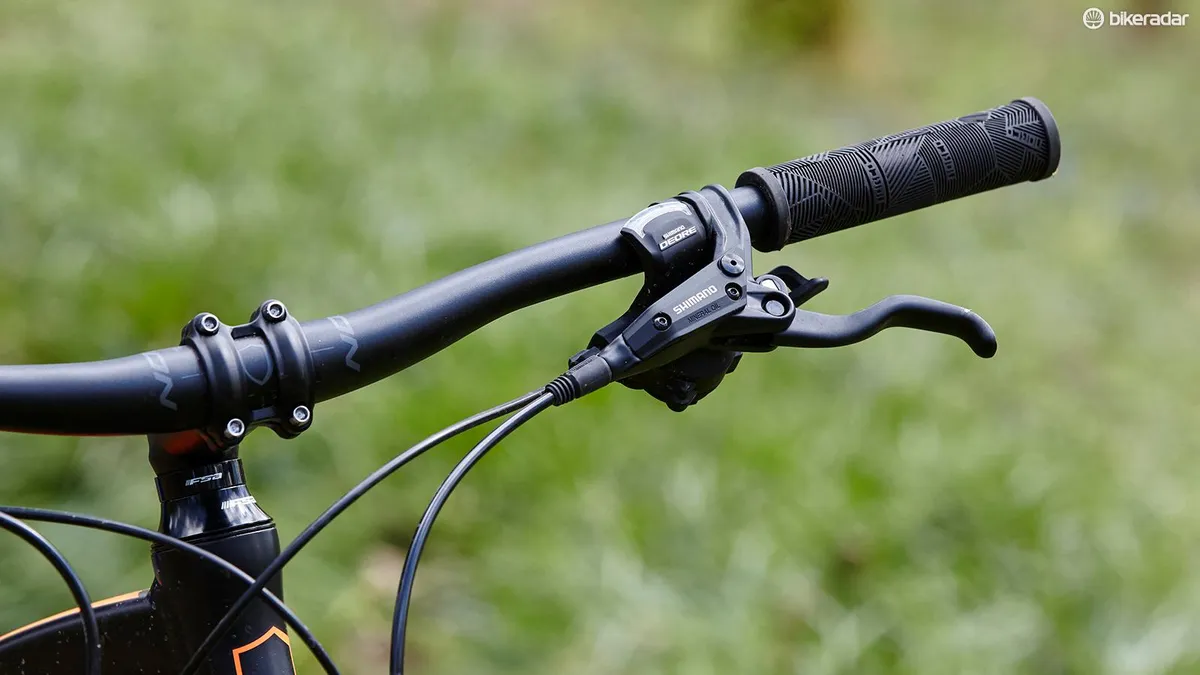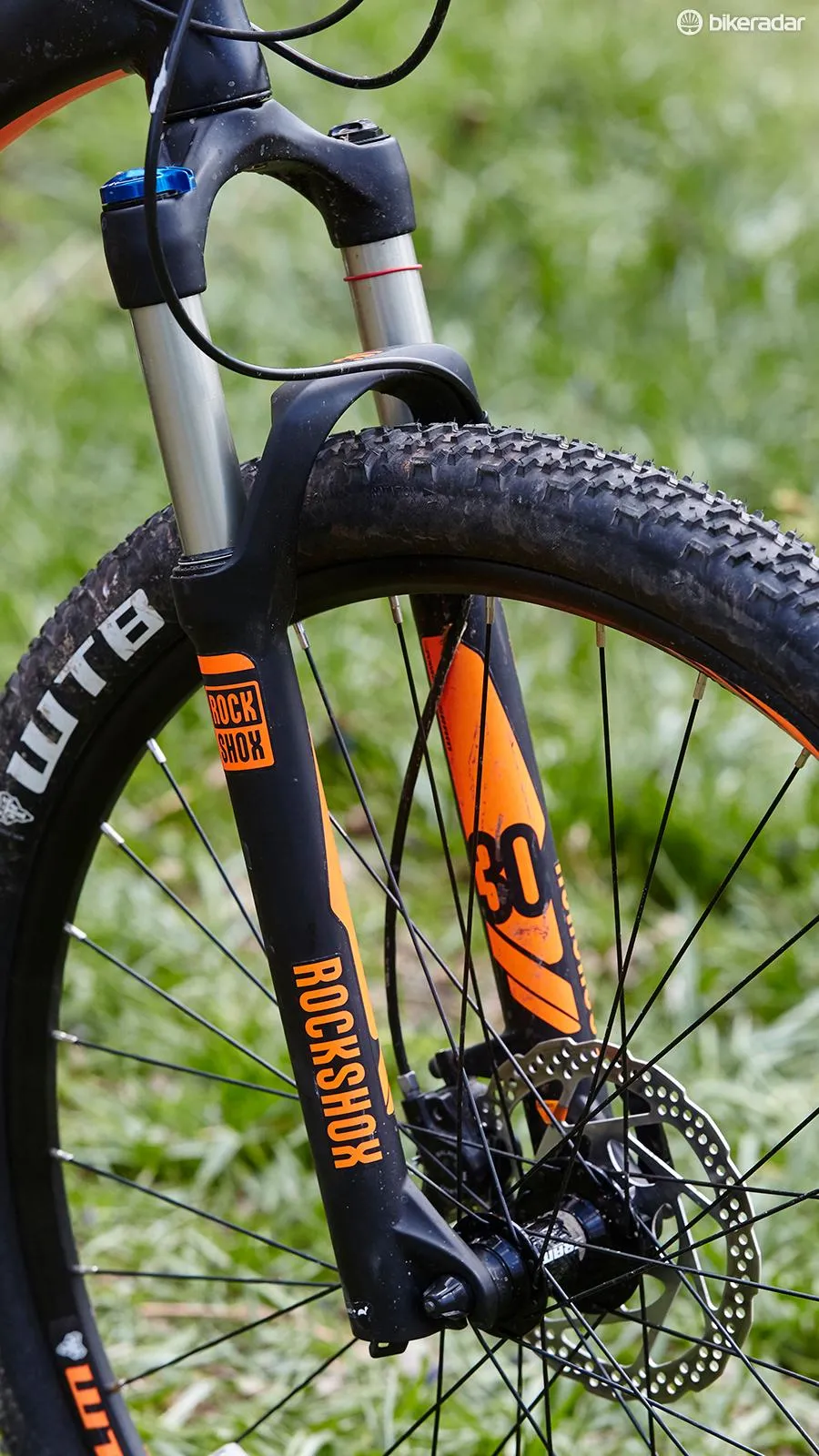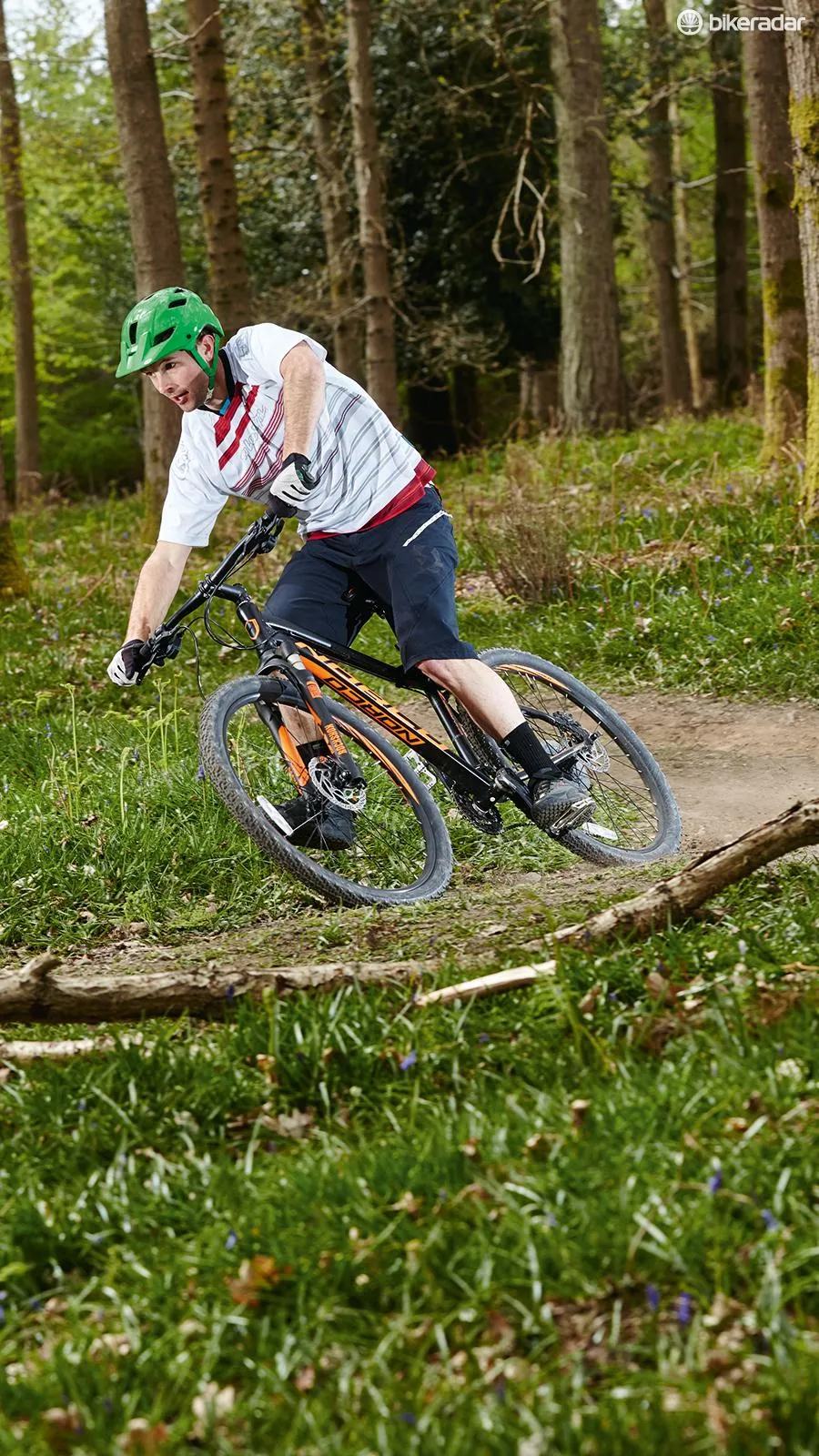Sitting at the top of Norco’s budget XC hardtail range, the Charger 7.1’s distinctive looks aren’t the only thing that make it stand out. With an airsprung fork and 2x10 Shimano Deore based transmission – pimped up by an SLX rear derailleur upgrade – it offers a fair chunk of componentry bling for your money. But how well does it perform?
- Highs: Handling blends fun and stability perfectly for day-long trail adventures, decent component blend and with added rack mount versatility
- Lows: Would be even better with a longer, more accurate-steering fork
Frame and equipment: versatile and confidence boosting beginner setup
Few things are more confidence-inspiring for novice riders than the ability to make a mistake on the trail without risking the tenderest parts of the body. The Charger’s radically sloped top tube follows a long tradition of Canadian hardtail design, giving its rider a precious inch or so of extra standover clearance. The seat tube has been extended – and braced with an extra tube – to keep the seatpost length within the realms of sanity.
A complex-profile down tube makes up the Charger’s backbone, widening to a stiffness enhancing rectangular section at the bottom bracket shell and curving where it joins the head tube to help disperse the stress from frontal impacts. The head tube isn’t tapered for extra steering precision, but that’s less of a problem on a bike at this level.
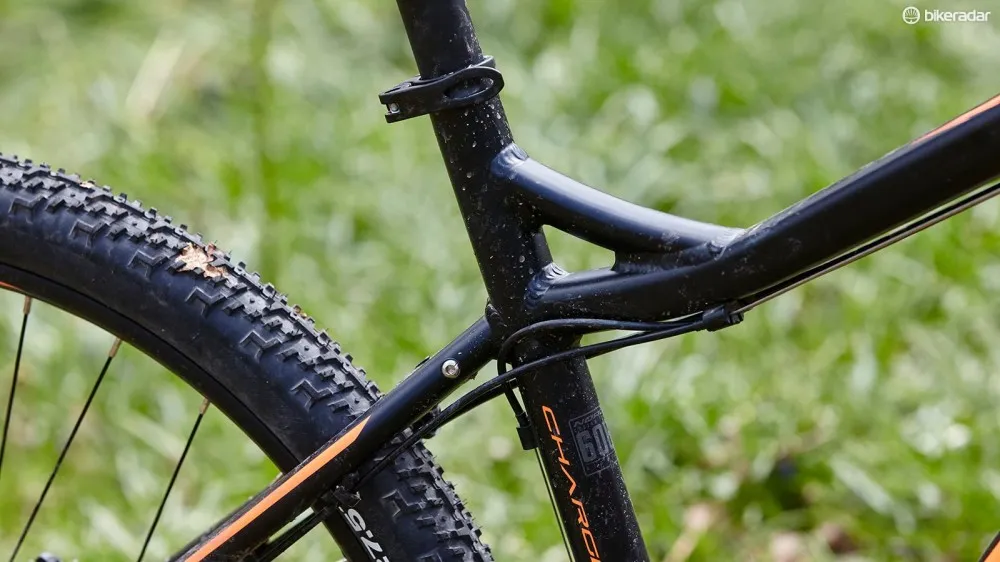
If your bike needs to do double duty for the weekday commute, don’t underestimate the value of being able to use a pannier rack
The seatstays and chainstays wend their way in ankle-clearing fashion from the seat tube and bottom bracket joints to the dropouts. There’s plenty of mud clearance, largely thanks to extra dimples in the chainstays around the tyre, though the relatively slender stock treads help in that department too. Rack mounts are a bonus for commuters or wannabe tourers, though there’s only room in the compact front triangle for a single set of bottle cage mounts.
Holding up the front is RockShox’s budget airsprung XC 30 fork in 100mm (3.9in) travel trim. It’s great to see an air fork, albeit a low-end one, on a budget hardtail – the adjustability over the cheaper coil alternatives makes a significant difference.
Tyre choice is a personal thing. The comparatively narrow and fast-rolling WTB Nanos are arguably a good choice for a bike that could see varied use, from the daily commute to weekend trail riding. But the limited air volume and shallow, close-spaced tread quickly show their limitations on muddy, technical trails. If your ambitions are largely off-road, you’d do well to upgrade to some rubber that has more grip and bite.
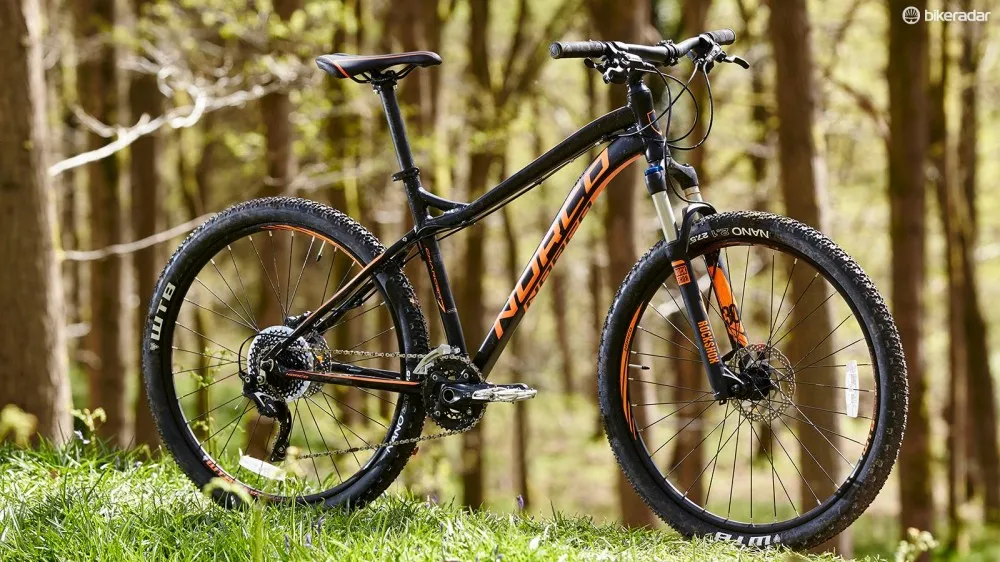
The sloping top tube may help soothe anxious novice riders
The 2x10 transmission simplifies gear selection at the expense of some top-end gearing, which might be an issue, but for most off-road trails it’s fine. We’d prefer a 180mm brake rotor up front for better cooling on long descents, but the Norco’s 160mm discs will be fine unless you have a habit of brake-dragging.
Ride and handling: a sweetly judged jump-off into mountain biking
A mountain bike has to cope with a wide range of situations, from barely-above-walking-pace climbs to eye-watering descents, and a whole lot more besides. Finding the right geometry formula to tackle all those trail scenarios is a balancing act, and nowhere more so than with a bike that’s quite likely to find itself in the hands of a relative newcomer to mountain biking.
Norco’s design team have got the recipe spot on with the Charger 7.1. Although there’s little on paper to separate this bike from more race-inspired hardtail designs, a sensibly proportioned head tube puts the handlebar at the right height for comfortable day-long rides without sacrificing handling precision or fun. We were initially concerned that the 85mm stem was a tad lengthy, but paired with the fairly short 590mm top tube of our 18.5in frame, it turned out to be just the right side of too long.
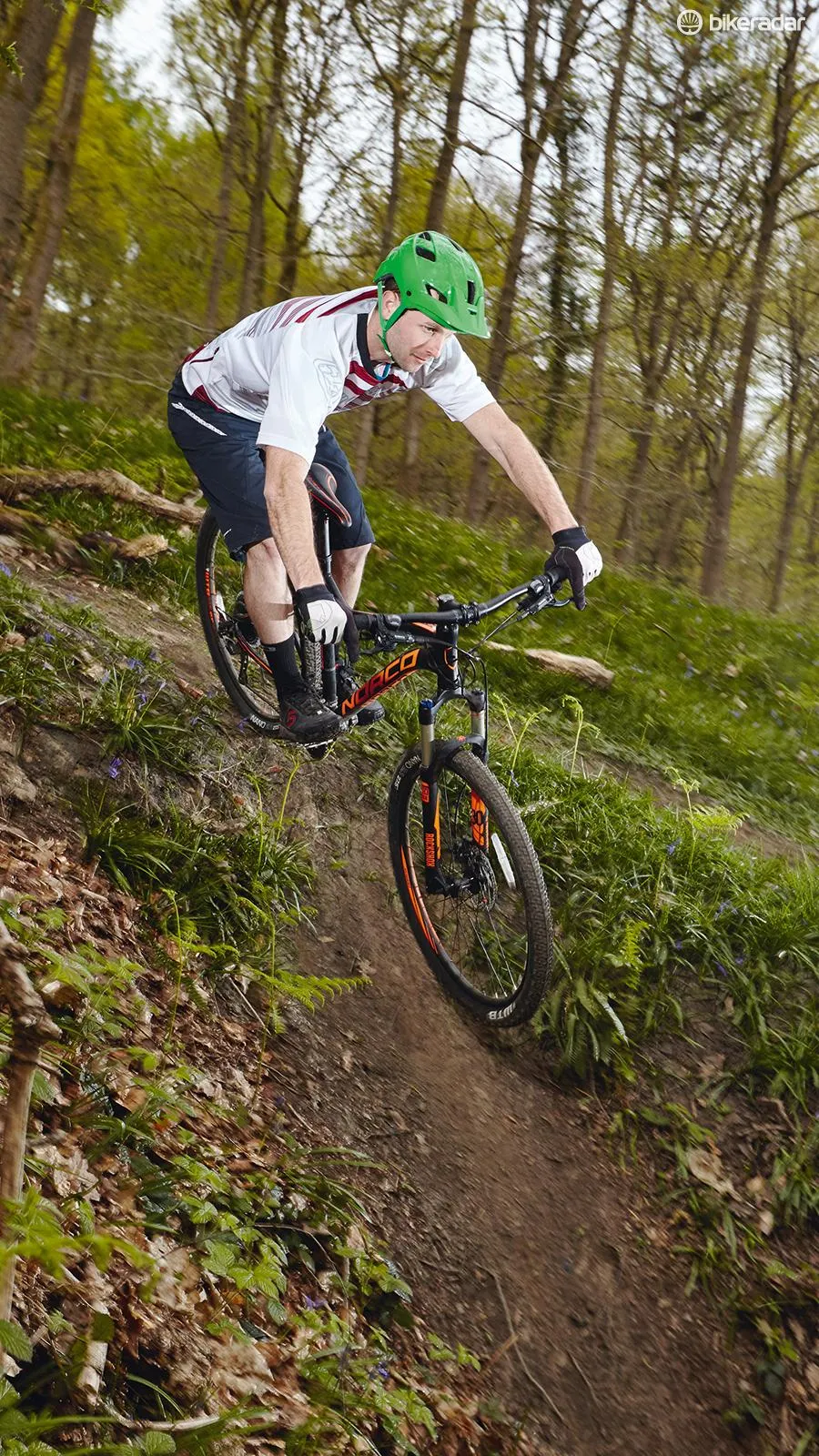
The Charger happily tucked into most things we threw its way
In every trail scenario from low-speed, rocky and rooty climbs to fast, flowing singletrack descents, the Charger turns out to be a willing accomplice. The limiting factor is the relatively basic, flexy and chattery fork. It’d be churlish to grumble too much – after all, we’re just grateful to see a decent air fork on a bike at this price.
We’ve no doubt that a slightly longer travel, better damped and more accurate fork would set the Charger’s potential free. Having said that, we’d then want a slightly slacker head angle and shorter stem…
But let’s not get carried away. As it stands, the Charger 7.1 achieves exactly what it sets out to do, which is to offer competent, fun and newbie-friendly trail performance. For a do-anything, go-anywhere bike at an incredible price, it’s well worth a second look.

